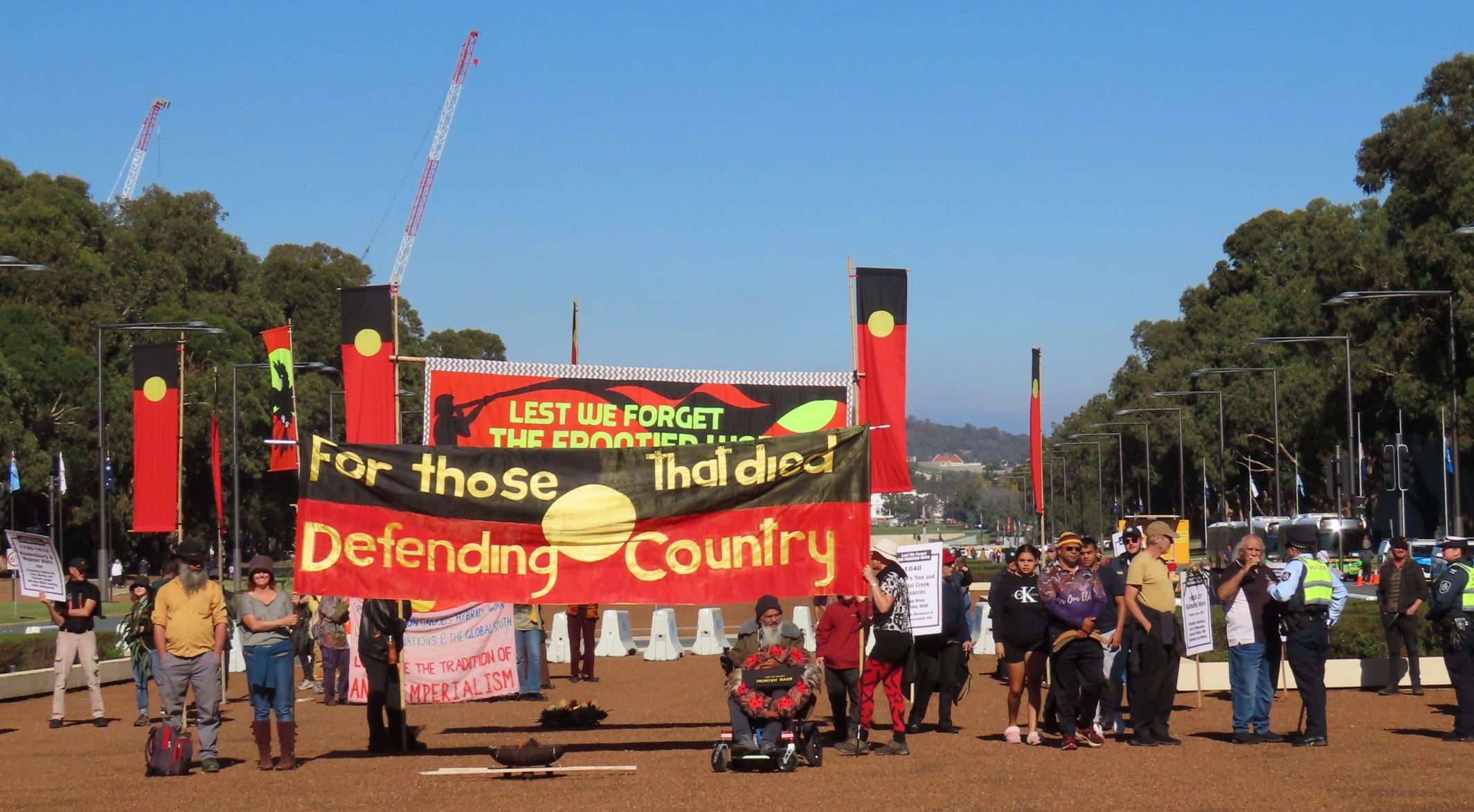
Frontier Wars March, Anzac Parade, Reid, Canberra, Australian Capital Territory, 25 April 2024. Photo: Jane Morrison
The marchers were allowed to walk up Anzac Parade but were not permitted to join the annual Anzac Day, RSL veterans’ march up Anzac Parade to the new parade ground in front of the heritage-listed Australian War Memorial (AWM). The AWM is undergoing controversial, expensive extensions that have many detractors such as historians and history organisations, heritage organisations and professionals, First Nations advocates, anti-war activists, some politicians and the general public. As in previous years, some of the marchers were allowed to lay wreathes at the Stone of Remembrance, still located on the western side of the AWM.
Read more about the frontier wars in Jess Whaler’s, story, in the National Indigenous Times, 25 April 2024:
https://nit.com.au/25-04-2024/11046/lest-we-forget-those-who-lost-their-lives-in-the-frontier-wars
For those interested, this website has a separate page devoted the Australian Frontiers Wars Marches: Australian Frontier Wars Marches
Check the rest of this website: https://www.australianfrontierconflicts.com.au for information about the many frontier conflicts, including massacres, wars, skirmishes, and smaller confrontations that occurred across Australia, then known as ‘New Holland’ or the ‘Great South Land’. Search the main menu. First Nations’ defence of Country took place from the day the First Fleet arrived at Kamay, (Botany Bay), New South Wales in January 1788. However, the shooting on 29 April 1770, by then Lieutenant James Cook of a Dharawal man of the Gweagal clan and the robbery of up to 40 spears from a Gweagal camp, were omens of what was to come. It has taken 254 years for four of those spears to be returned to First Nations’ descendants. See previous post: https://australianfrontierconflicts.com.au/four-gweagal-spears-stolen-by-captain-cook-and-crew-in-1770-returned-to-la-perouse-community-new-south-wales-254-years-later/
